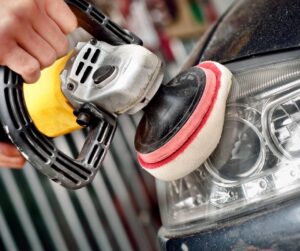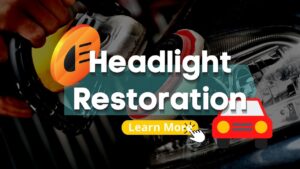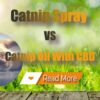Elevate Your Driving Experience with Professional Headlight Restoration Services
Investing in professional headlight restoration services not only revitalizes the performance and brightness of your vehicle’s headlights but also significantly enhances your overall driving experience. Over time, headlights can become cloudy and less effective due to exposure to environmental elements such as UV rays and road debris. Restoration can breathe new life into them, ensuring they illuminate the road effectively and safely.
It’s essential to recognize that faded or discolored headlights can pose serious safety hazards while driving. This deterioration may even breach traffic regulations, rendering your vehicle illegal for operation. Prioritizing headlight restoration is crucial to preventing potential accidents and ensuring compliance with legal standards.
If your headlights are compromised and ineffective, your vehicle may not pass the necessary roadworthy inspections, which are crucial for legal driving. This situation not only jeopardizes your safety and that of your passengers but also endangers other road users.
Furthermore, research indicates that cloudy headlights can diminish your visibility while driving at night by an alarming 75%, which significantly increases the risk of accidents. Ensuring your headlights are clear is vital to safe nighttime driving.
While replacing your headlights can often be a costly and unnecessary option, many vehicle owners have the capability to restore headlights themselves. However, for optimal results, enlisting the help of a professional car detailer is highly recommended.
Identifying the Urgent Need for Headlight Restoration Services
Understanding the Causes of Headlight Discoloration and Damage
As vehicles age, the plastic headlight lenses are susceptible to deterioration due to various environmental factors, including abrasion from road debris and prolonged exposure to damaging UV rays. This deterioration can result in a yellowish, opaque look that severely limits the efficiency of your headlights if not addressed promptly.
In sun-drenched regions like Brisbane, the tropical climate significantly accelerates this issue, particularly affecting porous materials such as the plastics used for headlight lenses. The intense sunlight can lead to quicker degradation compared to cooler areas.
A common misconception about headlight damage is that it occurs internally within the lens; however, the reality is that degradation primarily affects the exterior surface. This misunderstanding can lead to delays in restoration efforts, resulting in further complications and safety hazards.
Evaluating Headlight Lens Materials: The Advantages and Disadvantages of Plastic and Glass
Examining Glass Headlights: Benefits and Limitations
While glass headlight lenses do not deteriorate to the same extent as plastic lenses, they remain vulnerable to chipping and cracking, which can lead to expensive replacements. This vulnerability requires vehicle owners to be vigilant about the condition of their headlights.
During the 1990s, manufacturers began to phase out glass headlights in favor of polycarbonate lenses, which have since become the industry standard for most modern vehicles on the road today due to their lightweight and flexible properties.
Analyzing Polycarbonate Headlights: Strengths and Vulnerabilities
Today, nearly all vehicles are equipped with headlights made from polycarbonate, a robust yet porous plastic material that is prone to discoloration from UV radiation over time. This susceptibility necessitates regular maintenance to preserve the clarity and effectiveness of the headlights.
The fading effect, commonly referred to as oxidation, can also adversely affect the paint on your vehicle, resulting in an unsightly appearance that detracts from the overall aesthetics of your car.
To mitigate the effects of oxidation, manufacturers often apply a protective hard coating to the lens, which effectively seals and safeguards the plastic from discoloration and environmental damage. This protective layer is crucial for maintaining the integrity of your headlights.
However, as time passes, this factory-applied coating will begin to degrade, highlighting the need for its removal and replacement with a new, high-quality protective layer to ensure continued optimal performance.
Unlocking the Key Advantages of Headlight Restoration
Modern vehicle headlights are primarily composed of polycarbonate plastic, which, despite its durability, remains susceptible to oxidation induced by UV exposure. Regular maintenance is critical, especially in warmer climates like Brisbane, where the need for timely headlight restoration services becomes increasingly apparent compared to regions with less intense sunlight.
Here are several compelling reasons to consider restoring your headlights at the first signs of yellowing or reduced brightness:
- Enhances Road Safety: Dull or foggy headlights can severely impair visibility, creating a significant safety risk during nighttime driving conditions.
- Preserves Vehicle Resale Value: Vehicles with clear and functioning headlights maintain their resale value; neglecting maintenance can lead to depreciation over time.
- Cost-Effective Solution: Restoring your existing headlights is typically a more economical option compared to purchasing new ones, making it a smart financial choice.
- Improves Vehicle Aesthetics: Restored headlights can significantly enhance the overall appearance of your vehicle, making it look well-cared-for and visually appealing.
- Boosts Nighttime Driving Visibility: Restoring headlights can greatly improve visibility during nighttime driving, contributing to safer driving conditions.

Identifying Quality Headlight Restoration Services: What to Consider
Many inexpensive headlight restoration services focus solely on removing the degraded factory protective clear coat, leaving the plastic lens exposed and vulnerable to future damage. This inadequate approach may lead to rapid discoloration and the emergence of tiny cracks, commonly referred to as ‘crazing,’ within a matter of months, greatly compromising the effectiveness of your headlights.
Employing low-quality restoration techniques eliminates the essential protective barrier against harmful UV damage, which is vital for preserving the integrity and clarity of your headlights.
The protective coating is paramount as it shields the headlight from environmental exposure, ensuring a longer lifespan and clearer illumination.
Relying solely on machine buffing as a quick-fix solution can inadvertently cause permanent damage to the lens, leaving it unprotected against subsequent degradation.
Commit to Excellence: A Comprehensive Approach to Headlight Restoration
An effective headlight restoration process entails the complete removal of the old, degraded factory clear coat, providing a fresh foundation for your headlights.
Following this initial step, the headlight undergoes a careful light polishing, and surrounding areas of the vehicle are masked off to prevent any overspray or damage to the car’s finish.
Next, a high-quality protective coating is applied, which cures to create a new clear coat that bonds seamlessly with the polycarbonate material, enhancing both durability and clarity.
This meticulous process results in a robust, chemical-resistant coating that remains crystal clear and non-yellowing, offering longevity comparable to brand-new headlights.
Your Step-by-Step Guide to Effective Headlight Restoration
There are primarily two methods for restoring your headlights: undertaking the task yourself or hiring a professional car detailer to handle the job.
If you opt for the DIY approach, ensure you acquire a comprehensive headlight restoration kit designed for effective results. Selecting the right products can make a significant difference in the outcome of your restoration efforts.
While some may propose using toothpaste as a makeshift cleaning agent due to its mildly abrasive properties, this method is largely ineffective on modern headlights and may inadvertently damage the vital sealant that protects them.
If the protective coating has been compromised, it must be completely stripped away and replaced with a new protective layer to guarantee maximum effectiveness and clarity.
Rather than risking additional damage, it is often wise to consult with a professional for restoration services.
However, if you choose to proceed with the DIY route, follow these detailed steps for optimal results:
Begin by acquiring a high-quality headlight restoration kit.
- Thoroughly wash your vehicle to eliminate any dirt and debris that could interfere with the restoration process.
- Carefully tape around the edges of the headlights to safeguard the surrounding paintwork from potential damage.
- Utilize sandpaper to meticulously remove cloudiness from the lens surface, ensuring a smooth and even finish.
- Apply the included polish to achieve a clear, polished surface that enhances visibility.
- Complete the restoration process with any final coatings as directed in the kit instructions for optimal results.
Take Swift Action for Safer, Brighter Headlights Today
To maintain your vehicle’s roadworthiness and improve nighttime visibility, it is vital to have a specialist assess and restore your headlights as soon as possible. Timely intervention can prevent further degradation and enhance safety.
If you start to notice your headlights becoming dim, foggy, or developing a yellowish tint, it’s time to schedule a professional detailing and headlight restoration service without delay.
By combining these essential services, you can breathe new life into your vehicle, achieving not only polished paintwork but also bright, clear headlights that enhance both safety and aesthetics.
As your local experts in headlight restoration and repair, we invite you to contact us for more information regarding our car detailing Brisbane services that guarantee exceptional quality and complete satisfaction.
The Article Headlight Restoration: Understanding the Process and Benefits Was Found On https://limitsofstrategy.com
The Article Headlight Restoration Process and Its Benefits Explained First Appeared ON
: https://ad4sc.com










Comments are closed